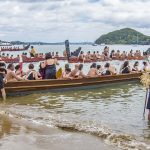
Day Of The Cultures
The Day of the Cultures, known as “Día de las Culturas” in Spanish, is a significant cultural celebration in Costa Rica. This holiday provides an opportunity to recognize and celebrate the country’s rich cultural diversity, highlighting the contributions of various ethnic groups to the nation’s identity.
It promotes unity, tolerance, and a deeper understanding of the multicultural fabric that makes up Costa Rican society.
Historical Background of Day of the Cultures
The Day of the Cultures in Costa Rica has its roots in the country’s history of immigration and cultural exchange. While Costa Rica is known for its predominantly Spanish-speaking population, it is also home to various ethnic groups, including indigenous communities, Afro-Costa Ricans, Chinese, Italians, and more.
The celebration was originally known as “Discovery Day” (Día del Encuentro de las Culturas) and was observed on October 12th to coincide with Columbus Day, a date associated with the European arrival in the Americas. However, the name and focus of the holiday evolved over time.
In 1994, the Costa Rican government officially changed the name to “Day of the Cultures” (Día de las Culturas) to shift the emphasis away from Columbus and European colonialism and toward celebrating the cultural diversity and contributions of all ethnic groups in the country.
This change reflected a broader recognition of the importance of indigenous and Afro-Costa Rican cultures, as well as the need to promote tolerance and multiculturalism.
Traditions and Celebrations on the Day of the Cultures
Communities across Costa Rica organize cultural festivals and events that showcase the traditions, music, dance, and cuisine of various ethnic groups. These festivals often include performances by indigenous groups, Afro-Costa Rican drumming and dance, and displays of traditional costumes and crafts.
Schools and educational institutions use this day as an opportunity to teach students about the different cultures that contribute to Costa Rican society. Special lessons, presentations, and cultural displays help raise awareness and appreciation of diversity.
Art galleries and museums may host exhibitions featuring the work of artists from diverse backgrounds. These exhibitions provide a platform for artists to express their cultural identities and perspectives.
Some organizations and institutions organize lectures, panel discussions, and workshops on topics related to multiculturalism, diversity, and the importance of understanding and respecting different cultures.
In some areas, community service activities, clean-up initiatives, and volunteer projects are organized to encourage citizens to come together and work towards common goals, promoting a sense of unity.
It is common for schools and cultural groups to arrange exchanges with members of different cultural communities. These interactions foster understanding and appreciation among different ethnic groups.
The Day of the Cultures in Costa Rica is a day of reflection, celebration, and recognition of the nation’s cultural tapestry. It encourages Costa Ricans to embrace diversity, promote tolerance, and honor the contributions of all cultural communities that have enriched the country’s heritage.








